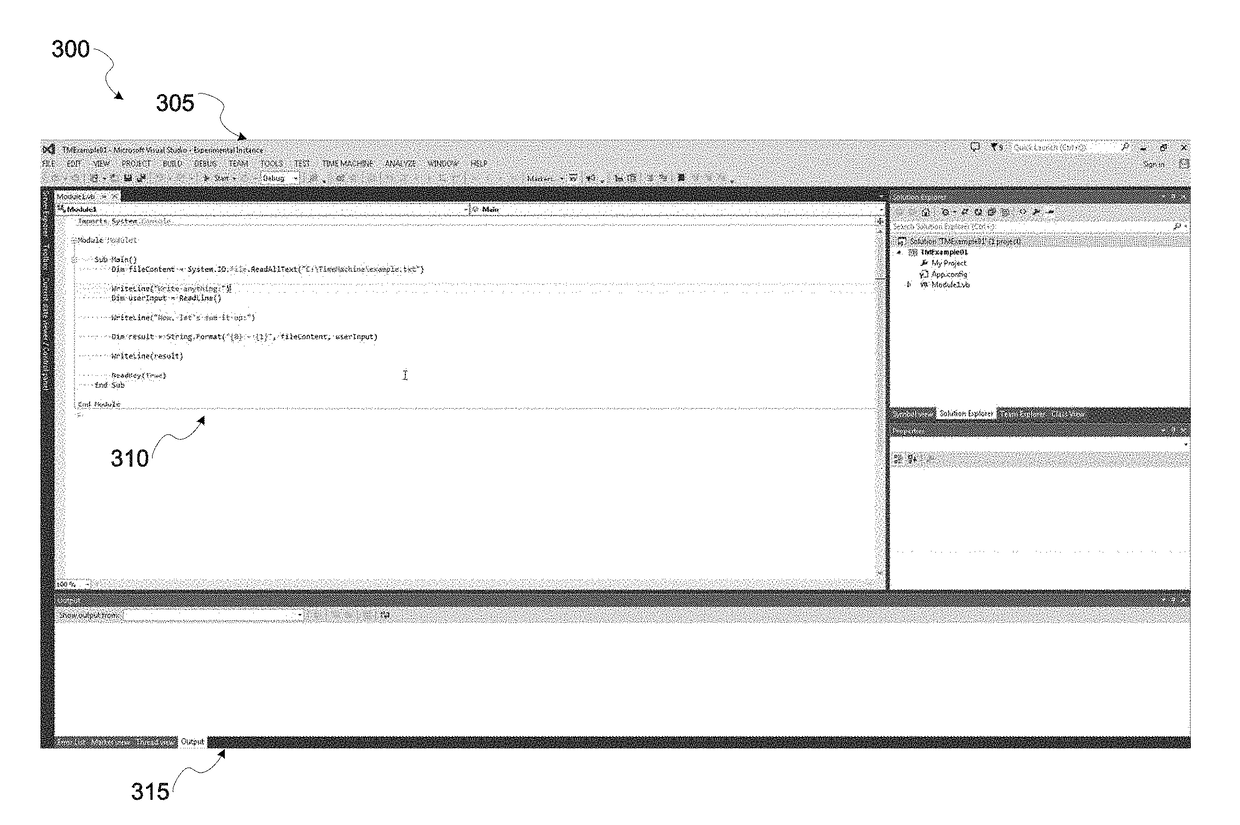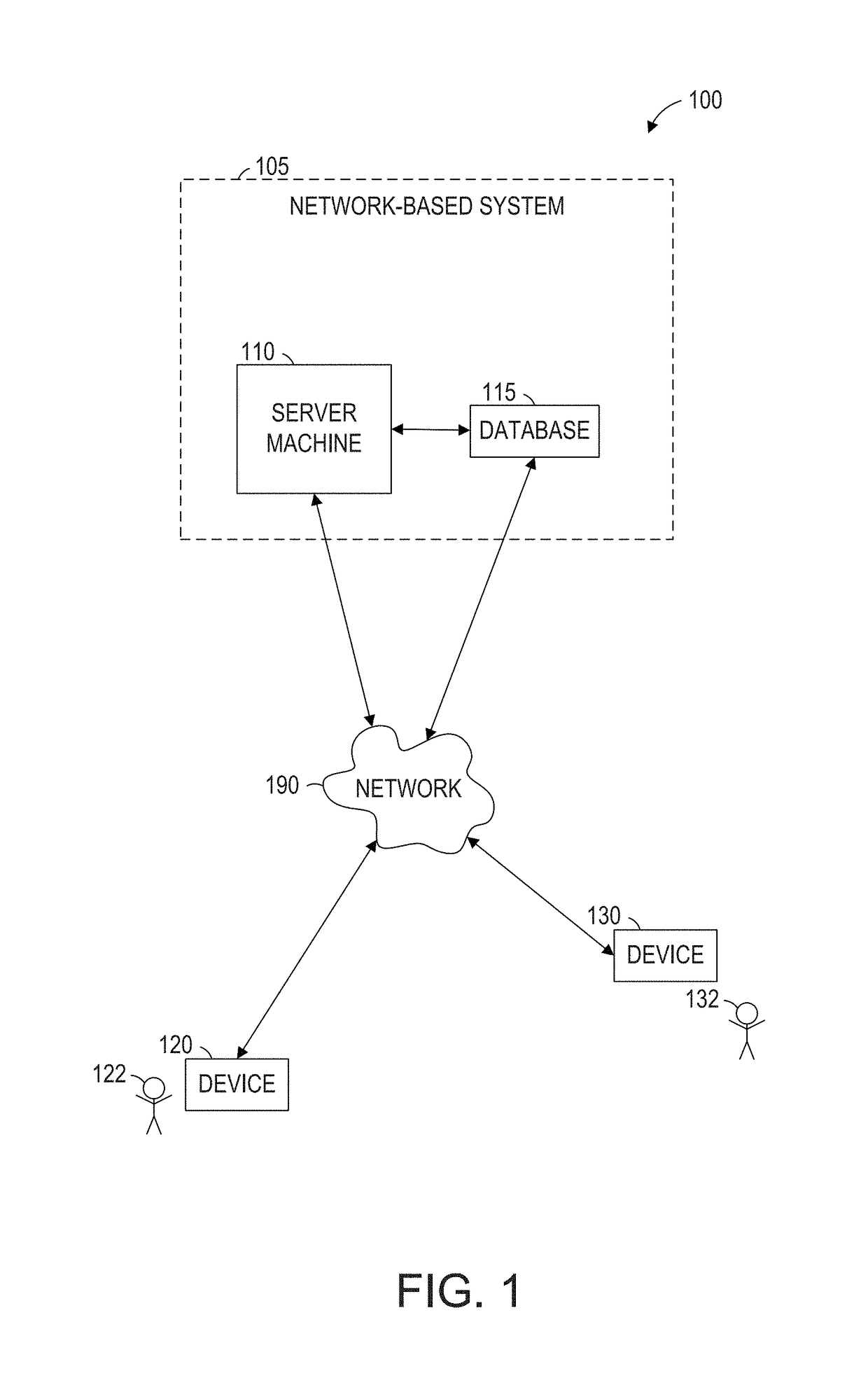Software code debugger for quick detection of error root causes
a software code debugger and root cause technology, applied in the field of processing data, can solve problems such as cost to develop softwar
- Summary
- Abstract
- Description
- Claims
- Application Information
AI Technical Summary
Benefits of technology
Problems solved by technology
Method used
Image
Examples
example use cases
[0053]Referring to FIG. 3, illustration 300 shows an example programming environment for developing and debugging source code with the aid of the debugging tool of the present disclosures, according to some embodiments. In this example, a simple program comprising lines of source code 310 is being displayed in Microsoft Visual Studio environment 305. As some examples, the environment 305 includes a number of submenus at the top ribbon, various icons used for tracing through the source code 310, and an output window 315 that shows what outputs are being generated while the program of the source code 210 is run. In general, most of the environment 305 represents an example of a typical programming environment found in a number of conventional programming environments.
[0054]Referring to FIG. 4, illustration 400 includes additional functionality provided by the debugger tool, according to some embodiments. Here, for example, a new submenu 405 called “Time Machine,” is embedded as one of...
example implementation details
[0069]In some embodiments, analysis and instrumentation of the target application is made inside the compilation process pipeline. It is split and takes place in part during the parsing and lexing phase of the compilation process and also during lowering and generating debugging information phases of the compilation process.
[0070]The analysis works on the Abstract Syntax Tree (AST) of the target application, and uses hints that are available during the lowering phase of the compilation process. The result is a modified—after lowering phase—AST and lowering metadata. Using the network based system 105, for example, to implement the architecture in FIG. 2, instrumenting the source code may be performed in a computer-implemented method in the following way, according to some embodiments:
[0071]1. Undoing some of the syntax-sugar to allow addition of recording statements into the code.
[0072]2. Enhancing classes to have their unique identifiers embedded. Shared code may be required to per...
example method
for Tracing and Recording States
[0136]FIGS. 13-17 provide support for an example process for generating the recorded states and various annotations described in the descriptions of the example use cases in FIGS. 3-12, according to some embodiments. The whole process is divided into two main phases. The first phase is compilation and building output files, which is performed by the compiler (see, e.g., RDB Compiler, FIG. 13 and FIG. 2). The second phase includes starting the application (e.g., executing the program of the source code), recording received states and viewing them. Both phases are separate from each other and can be done on different workstations (for example—application can be compiled and build on developer's computer, but it may be run on a tester's computer).
[0137]Phase one—compilation and building output
[0138]Before tracing the operations executed by an application of the source code, the application must be built, such as through the RDB Code Compiler (RDBCC) (see...
PUM
 Login to View More
Login to View More Abstract
Description
Claims
Application Information
 Login to View More
Login to View More - R&D
- Intellectual Property
- Life Sciences
- Materials
- Tech Scout
- Unparalleled Data Quality
- Higher Quality Content
- 60% Fewer Hallucinations
Browse by: Latest US Patents, China's latest patents, Technical Efficacy Thesaurus, Application Domain, Technology Topic, Popular Technical Reports.
© 2025 PatSnap. All rights reserved.Legal|Privacy policy|Modern Slavery Act Transparency Statement|Sitemap|About US| Contact US: help@patsnap.com



